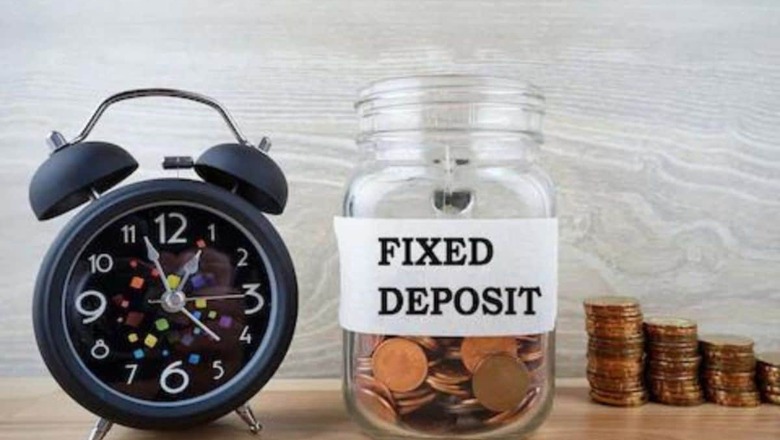
views
Fixed deposits (FD), also known as term deposits, is a kind of investment option where you put a lump sum amount in your bank or a financial institution for a fixed tenure.
At the end of the FD tenure, you receive the amount you have invested plus compound interest. The rate of interest is agreed when the FD account is opened in a bank or a financial institution.
Types of fixed deposits
There are several types of FD products available in the banks. However, FDs are broadly categorised into two types; Cumulative and Non-Cumulative.
This division is done on the basis of interest payout. Whether one receives interest earned regularly or opt for on-maturity payment, it determines the type of FD you will have.
According to the information available on finance portal Paisabazaar, cumulative fixed deposit means a fixed deposit where the interest is accumulated or collected till the end of the maturity period.
“The interest earned in one year or in one cycle is reinvested or added to the previous principal, thus increasing the principal amount. This, in turn, pumps up the interest. Here, the power of compounding is put to best use.”
Once your FD matures, you receive the maturity amount which is a total of your initial deposit amount plus accumulated interest.
What are non-cumulative fixed deposits?
In non-cumulative fixed deposits interest accrued is paid regularly to the depositor. The interest-paying interval can vary according to the FD terms. Usually it is monthly to quarterly or semi-annually.
This type of FD offers a regular payout to investors since the interest is not withheld by the bank.
Method of calculation of FD interest
In India, FDs are a popular option to save money. They are considered a safe investment, with good returns.
The returns on an FD are fixed when you open the account. Even if interest rates fall after you open a fixed deposit, you will continue to receive the interest decided at the start.
Interest rates on FDs are fixed when you open the deposit and the rate depends on the term that you wish to hold it for. FD rates may change as RBI MPC repo rates alter. While some banks may increase the interest rates, others may act more cautiously.
The Indian Banks’ Association, for the purpose of calculation of interest on domestic term deposit, has prescribed that on deposits repayable in less than three months or where the terminal quarter is incomplete, interest should be paid proportionately for the actual number of days reckoning the year at 365 days.
Some banks are adopting the method of reckoning the year at 366 days in a leap year and 365 days in other years. While banks are free to adopt their methodology, they should provide information to their depositors about the manner of calculation of interest appropriately while accepting the deposits and display the same at their branches.
If a FD matures and proceeds are unpaid, the amount left unclaimed with the bank will attract savings bank rate of interest.
Read all the Latest Business News here















Comments
0 comment